Welcome to Genesis Reading, I’m Sheridan Hotung
teaching experience
of hours working 1:1 with students, locally, nationally and internationally
of happy, empowered, confident students
Hi, I’m Sheridan Hotung (Ho/tung)
The ‘u’ in my name is pronounced like the ‘oo’ in book!
You may not believe it, but I’m part Chinese? Tung actually means, ‘from the East.’
My Dad, who grew up during World War 2 in China, was the eldest of four. His mother was English and his father was a quarter Chinese. Fluent in Mandarin, Cantonese, Shanghainese and French, books became his way to freedom. He loved all genres of literature and his passion for stories, along with his wild imagination, ignited a passion for reading in me too. The stack of books beside his bed was constantly changing. He flew through novels and ventured around the world through the characters in his beloved books. Naturally, I came to love them as well.
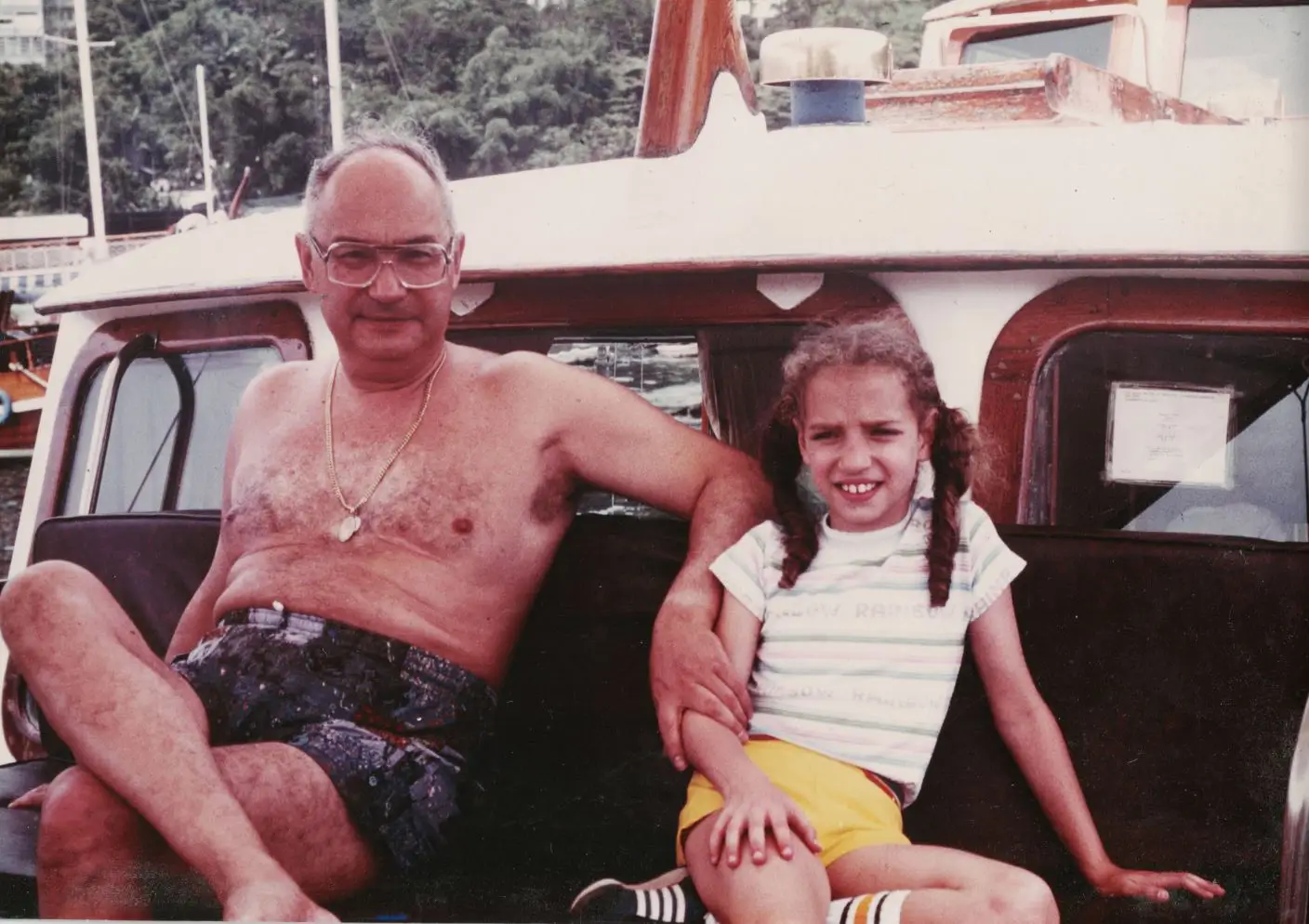
Image: Sheridan Hotung pictured with her Father on holiday.
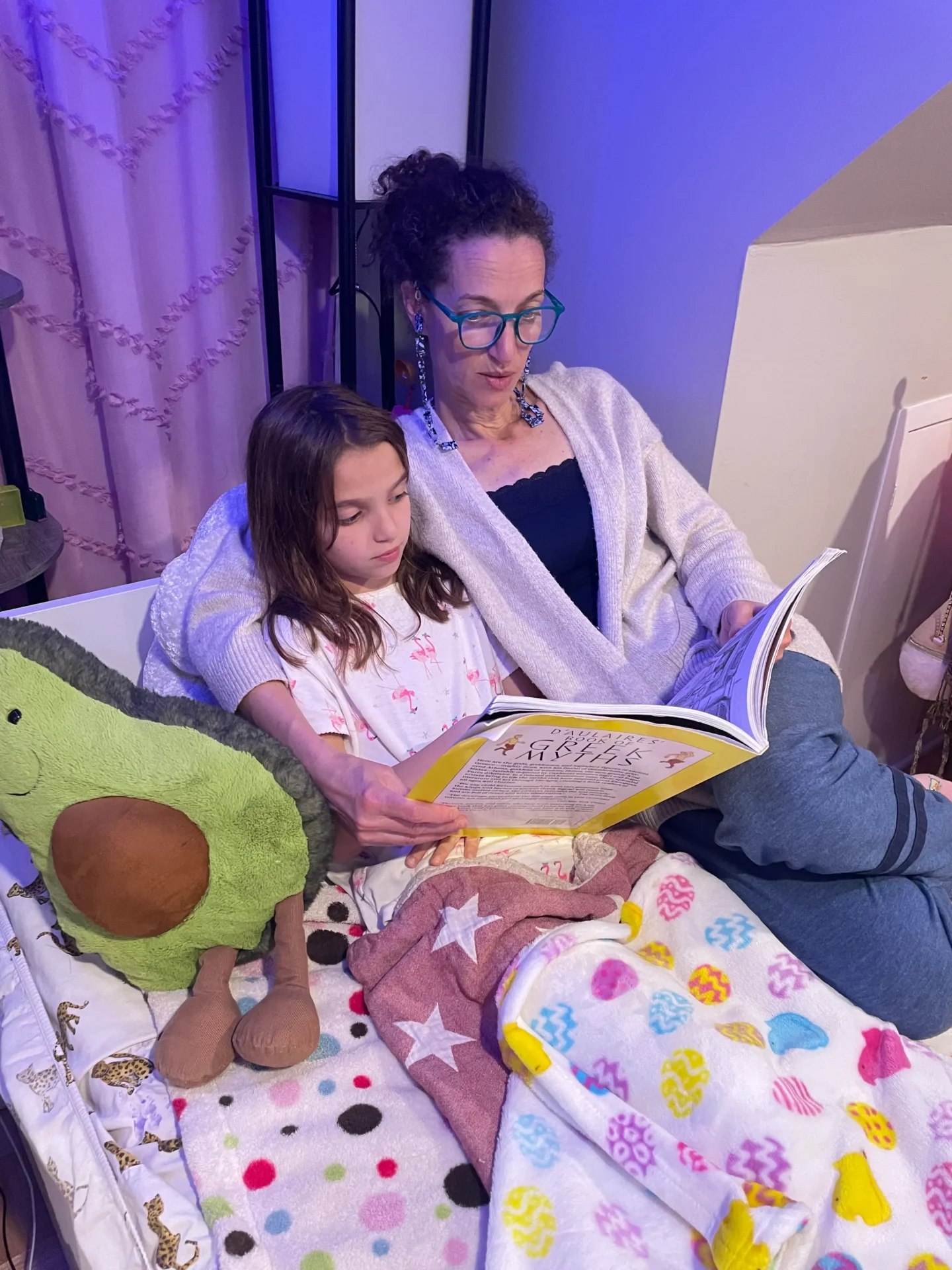
Story time is hands down every child’s favorite time of day. The nightly bedtime ritual is when our children come to identify frequent and phonetic words, like ‘the’ and ‘cat’ as they follow along. One night, my son began ‘reading’ The Hungry Caterpillar without errors. I remember thinking, ‘Wow, my son is a fantastic reader!’
Strangely, when we would work on his weekly spelling list or read the level 1 beginner books sent home by his teacher, he struggled with words like cup, frog and milk. Has this happened to you? Did you wonder what was going on?
Long story short, I came to understand that my son was memorizing stories and used the pictures to guess what was happening in the story. In reality, he had maybe 7 sounds mastered, and the rest of the time he was relying on pictures and memory to ‘read’ the story!
Image: Sheridan Hotung pictured with her daughter reading.
Discovering that my son, and later my daughter, were dyslexic sent me way off the course I had imagined! At the time, it felt like I had fallen down a rabbit hole into a world I did not understand. Over the course of the past 20 years, I have discovered the fascinating intricacies of the dyslexic brain and how children must be taught in order to become fluent readers. The reality is that dyslexic children, who are very bright, are seriously struggling to break the language code. They use a variety of coping strategies to cope in a world anchored in letters.
Before my son’s dyslexia diagnosis, I had never encountered dyslexia…or so I thought. When I mentioned what was going on to my family, my parents shared with me that several of my siblings are dyslexic. At the time, no one knew what that even meant. My parents just had to figure out solutions at home to help them. I was shocked because my siblings are smart, creative and out of the box thinkers.
I learned that dyslexia has nothing to do with intelligence and some of our most important global contributors have dyslexia. In fact, 1 in 5 people around the world have dyslexia. Knowing this staggering statistic and the mental, emotional and academic impact on children, families and generations was shocking to me. I knew I had found my purpose and have dedicated my life to those who are unable to enjoy this essential human right.
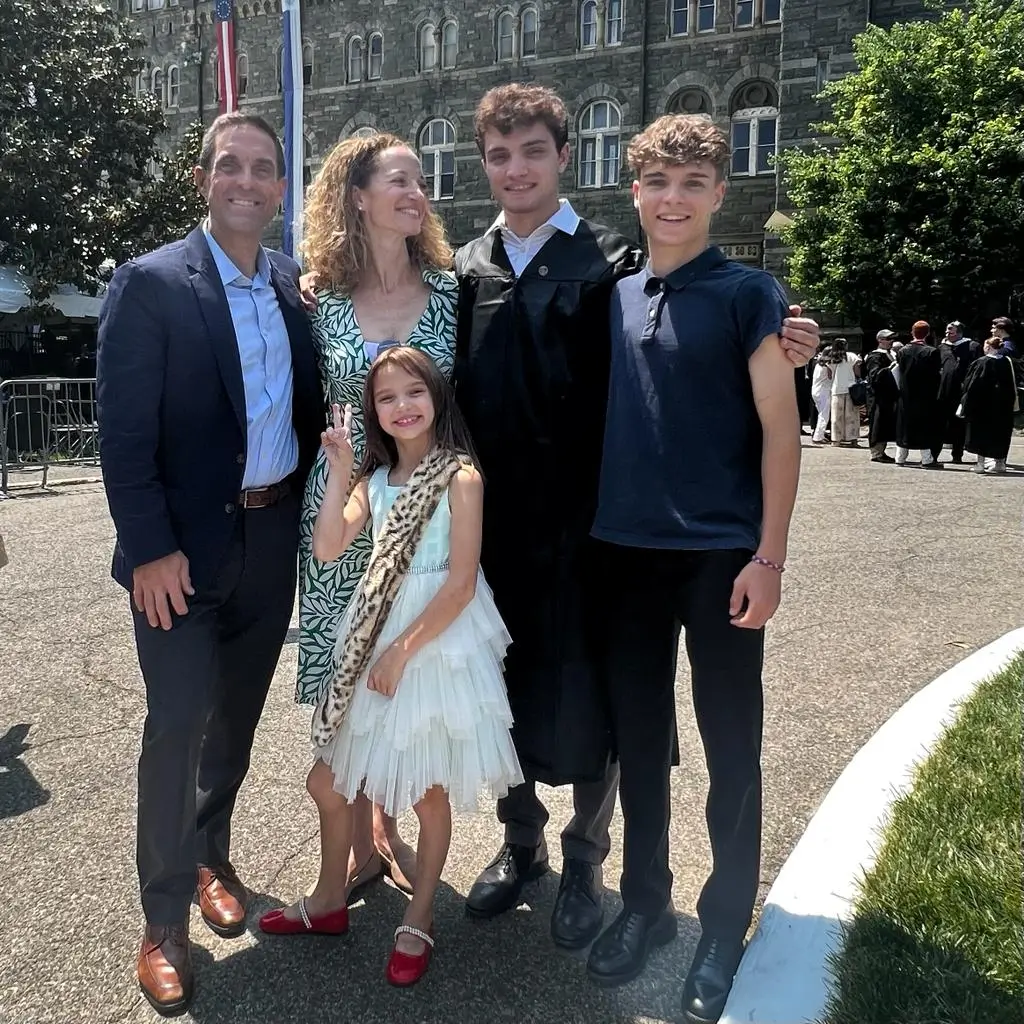
Image: Our family at my son’s graduation
I wasn’t always an authority on dyslexia. In fact, I was in denial that my son’s writing ‘fist grip’ was even an issue. I told myself, and everyone else, he would grow out of it. His frustration with all modes of communication led to him banging his head on the wall. It was so bad that the doctor told me to video the outbursts, so no one would think I was hurting him. Once he was diagnosed, I was quicker to address my 18 month old daughter’s non-verbal communication.
Knowing that dyslexia is genetic and seeing similar patterns in my children gave me a powerful head start to get her speech intervention. But this still wasn’t enough to prevent what happened over the next few years. As my children progressed in the public schools, they were not keeping up with the other children. Well meaning teachers assured me that they were late bloomers and the IEP’s would make sure they would not fall behind.
I foolishly listened and boy was I WRONG! My daughter, a 7th grader, was reading at a 1st grade level! The IEP meetings always felt like a gang up on me and somehow administrators were able to deflect responsibility. Even more confusing was how the IEP target goals were only 80%. I knew I needed to get her out of there as her self-esteem was plummeting.
of In 2024, post Covid, homeschooling may not seem drastic, but back then, pre-Covid, it was a big deal! And that’s exactly what we did. For the next 27 months, Saskia met with a Certified Academic Language Therapist 5 days a week for an hour, year round. It was hard for her in the morning to watch her siblings go off to school. She wanted to be ‘normal’ and do what everyone else was doing, but it was no longer an option. The teachers at the public school were simply not trained and I was no longer drinking the ‘kool aid’.
The therapy was intense and there were no breaks during the summer or even on Spring Break. On holidays, we zoomed in from different parts of the world. Saskia simply did not have the luxury of time. So much of it had been wasted listening to untrained teachers. During this time, I did my 2 year graduate work to become a Certified Academic Language Therapist.

I believe kids should be taught to read by trained professionals who can spot, intervene and solve any reading bumps a child may encounter on their educational journey. Our family learned the hard way, through years of unsuccessful small group pullouts and IEP meetings. Schools don’t hire or train enough teachers who are skilled in identifying and intervening with effective strategies for the 1 in 5 children who struggle to read.
If we had circumvented the traditional channels and started working with an experienced Certified Academic Language Therapist in 1st grade, we would have been able to solve this problem in a fraction of the time…not to mention avoiding the academic, social and emotional frustration.
My daughter had always dreamed of becoming a nurse. She wore dress-up scrubs and had a toy stethoscope from the age of 2. But as a 7th grader, unable to break the code despite years of public school intervention, those dreams had faded. However, after 27 months with a CALT, she became a confident reader and voraciously began to read The Hunger Games and The Chronicles of Narnia.
Transition from homeschool back into a more structured school environment was not as easy as we had anticipated. Within a few weeks, the workload became overwhelming and she began to fall behind. This was obviously a massive blow after all the success she had experienced in breaking the code. Here again is where the schools often fail our struggling learners. Just breaking the code is not enough. Dyslexic learners need unique strategies and visual graphic organizers that gel with the way they think in order to manage the quantity of work in High School and beyond.
I began a new search for smaller High Schools where Saskia would have access to a learning center with trained teachers and specialized guidance. The answer from every school was ‘No’. The reasons varied between her scores being too low or there was a long wait list or they could not meet her needs. One thing I’ve come to know about myself having 2 children with dyslexia is that when I am told ‘No’, I receive it as a challenge to find a way. I’m not 100% sure how I found the High School Saskia attended next, but what I can tell you is that it was 300 miles away from where we lived. And so we moved!
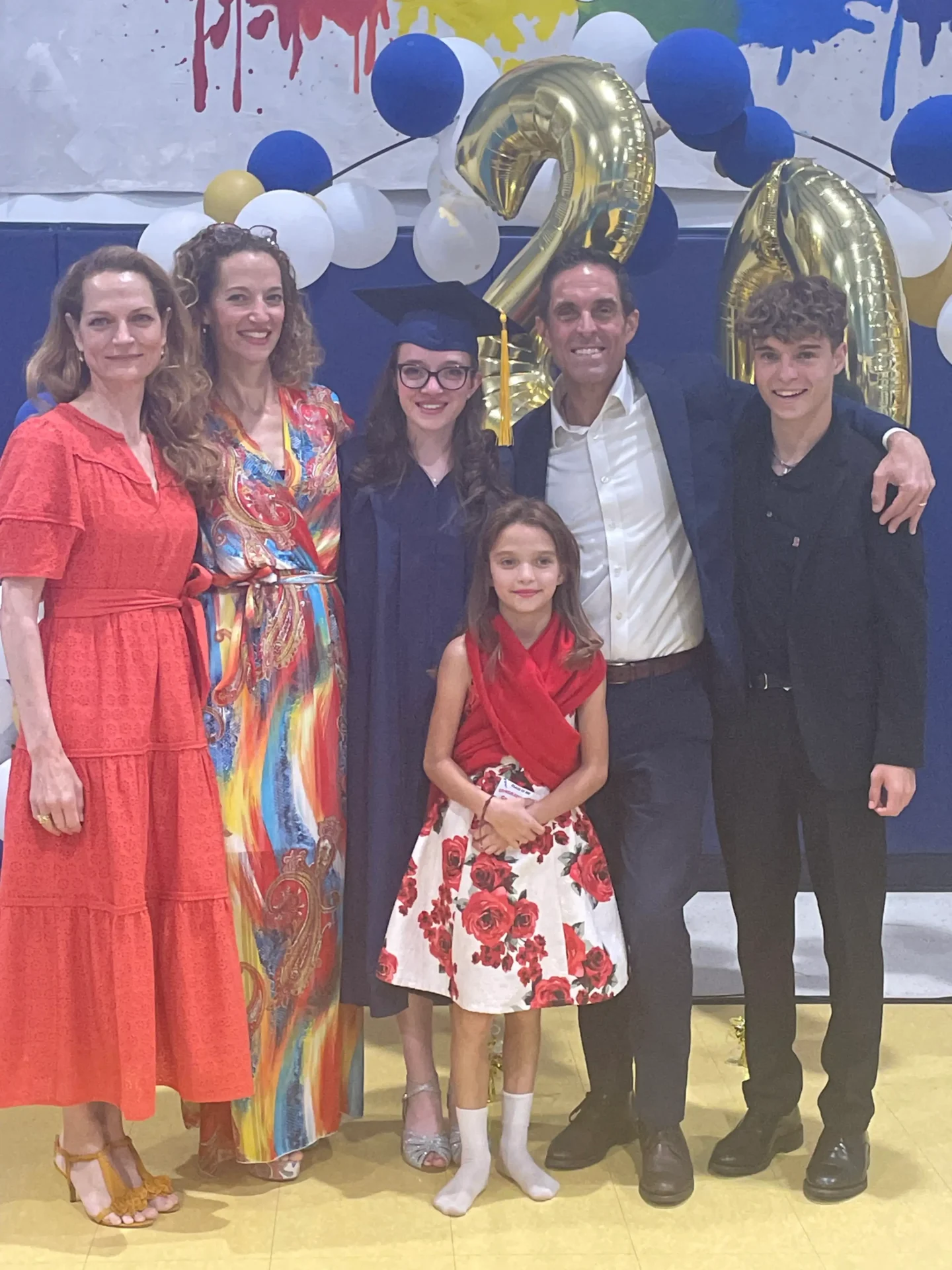
Last year, Saskia graduated High School with straight A’s in subjects like Anatomy, Math and English. These had been incredibly challenging in the public school, but because she was now working with trained teachers, she had the tools to succeed. I am delighted to share that she just finished her freshman year at college, majoring in Nursing.
As I was writing this, she called me to share that she just got her Economics Final back and she received a hard earned and well-deserved 92! But what I love best is hearing her on the phone with her friends laughing and joking around.
These relationships are priceless, and I can’t put a price tag on them. Seeing her confident, comfortable and reaching for her dreams is the big prize. Unlocking language is the key.
I don’t want any other parent to go through what I went through. I’m looking for parents who are ready to make up for lost time and close the widening gap. It’s step-by-step. It’s measurable. If you aren’t using this system to teach your child, then your child will not read as quickly and easily as they should be able to.
When I first set about solving this problem for myself, I expected to find help in the school system. What I found out is that the school’s offer of 30 minutes 2 times a week by untrained teachers was not enough. I was able to homeschool my daughter so she could see a private therapist and eventually move 300 miles across 3 states to a specialized school. But not everyone can do that.
Are you ready to work with someone who has the expertise to teach your child how to read and write the way the brain actually learns?
Are you ready to have your child learn the best methods at the most convenient time for them?
Are you ready to see measurable progress and results?
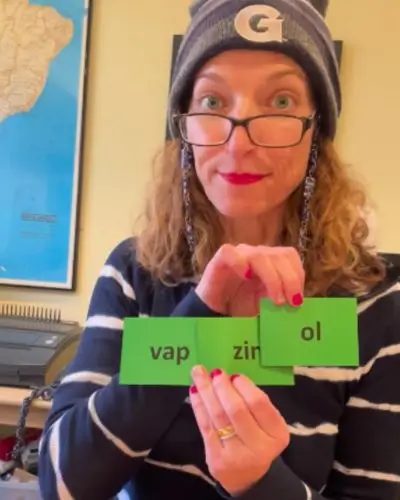
Many families have used this system to change their children’s future opportunities. I love to teach people about communication and connection. I am going to show you some exact strategies that create the right environment that caters to your child’s learning style.
I’m on a mission to help as many parents, teachers & educators access the tools they need right now to get measurable results so their child feels confident in reading and writing.
I speak at conferences and provide professional development to teachers, administrators and parents at local schools and universities to further my mission of literacy for all.
I specialize in
Re-Energizing
Problem-Solving
Building Confidence
Empowering Parents
Public Speaking
Transforming Lives
Are you serious about solving this problem?
Please get in touch so that we can discuss your individual needs and see how I can get you and your child from frustration to literacy freedom.
